by Matthew Airey
In the summer of 1960 Italy hosted the Olympic Games. For many Italians, the Games marked the highpoint of Italy’s post-war programme of regeneration, which was set in motion following the defeat of fascism by the Allies in the mid-1940s. The Games showed the world at large that Italy had forsaken its fascist past to emerge as an economic powerhouse in Europe. As the Games showed, the years of the ‘economic miracle’ in Italy had been a success, bringing hope and prosperity to an invigorated middle class. In cinema, meanwhile, the gritty neorealism of Rossellini and De Sica gave way to a sense of ‘the good life’ and the glamourous world of Fellini’s Rome. Yet for some the post-war ‘economic miracle’ came at a cost. The new order that emerged in the post-war years brought about urban alienation and isolation. The post-war Italian cityscape became an unfamiliar site of industry and intensive capitalism.
In this context of modernisation and its consequences, Michelangelo Antonioni made four films that explored the condition of the alienated self in post-war Italy; L’avventura (The Adventure, 1960), La notte (The Night, 1961), L’eclisse (The Eclipse, 1962) and Il deserto rosso (Red Desert, 1964). Due to their concern with alienation, Chatman (1985), Nowell-Smith (1997), Gandy (2003) and Williams (2008) assess the four films as constituent parts of a tetralogy. In L’eclisse, Vittoria (Monica Vitti) separates from her fiancé Riccardo (Francisco Rabal), a middle-aged intellectual, and later takes up with the brisk young stockbroker Piero (Alain Delon). Between two relationships, Vittoria is an alienated self wandering the streets of post-war Rome.
Positive Alienation
Breaking from typical investigations that view Antonioni as the gloomy chronicler of a post- war ennui, this piece seeks to link alienation to new sensory experiences. As Moore (1995: 22) reminds us, ‘talk of alienation in Antonioni’s cinema is more often than not negative’. Extending this line of enquiry to consider new ways of ‘seeing’, I shall argue that Antonioni presents a ‘new optical drama’, which comes about through the condition of alienation from the modern world.
For this discussion of L’eclisse, the basic understanding of alienation is taken from Kevin Moore (1995). Moore (1995: 22), writing about the ‘logic’ of alienation in the films of Antonioni, argues that ‘alienation arises when the self becomes disenchanted with the world and retreats into itself, oftentimes to reflect upon its relations with the world and its relationship with others’. This disenchantment with the world is often motivated by modernisation, which, through its concomitant process of urbanisation, makes spaces, for some individuals, unfamiliar and uninhabitable (Moore 1995).
However, Moore (1995: 23) understands that alienation can be experienced in both a positive and a negative sense. That is to say that alienation from the world is not an end in itself. Retreating from an uninhabitable world is the first stage ‘of a process which, ideally, re-places the self back into a world of its own devising’ (Moore 1995: 23). Through alienation the individual rejects the ‘commonplace’ to discover what for Moore is the ‘novel experience’ and new emotional state, or what to my mind is a new sensory perception.
I would suggest that Antonioni presents us with an image of the estranged modern individual, a feature typical of the modernist cinema of the 1960s (Kovacs 2007: 66). Often residing in a city, through which he or she wanders aimlessly, this individual belongs to the upper- or lower- middle classes and is free from material concerns and able to think about life (Kovacs 2007: 69). Above all, this estranged person has lost all essential contact to others and to the world (Kovacs 2007: 66). It is such an individual who appears across Antonioni’s tetralogy—Claudia (Monica Vitti) in L’avventura, Lidia (Jeanne Moreau) in La Notte, Vittoria in L’eclisse and Giuliana (Monica Vitti) in Red Desert.
However, following Moore (1995), I contend that this individual is engaged in a process. In the example of L’eclisse one does not find the individual completely estranged from society, forever alienated, perennially doomed to a state of wandering. The film is not so much about alienation as it is about purposeful searching and discovering. Alienation is a transitory stage through which one passes in search of the novel experience. In Antonioni’s L’eclisse, alienation is a positive condition, through which Vittoria discovers new ways of seeing in the modern world.
Deleuze’s ‘Cinema of the Seer’
With his notion of the time-image, Gilles Deleuze (2013 [1985]) provides us with an interpretative stance on the way in which alienation motivates change. In presenting the post-war crisis of alienation, Antonioni presents what Deleuze terms the ‘cinema of the seer’, replacing ‘traditional drama’ with a new kind of ‘optical drama’, in which the alienated self wanders around spaces, unable to absorb those spaces in which she finds herself. Yet finding herself in this state, she is propelled toward thought, which in turn takes her to a new sensory experience. With the post-war crisis of alienation comes the discovery of the new.
After the Second World War the sensory-motor schema that underpinned the movement- image—or ‘traditional drama’—slackened. From 1945 cinema was in the realm of the time- image, and to Deleuze, the genesis of the time-image can be found in the films of the Italian neorealist movement of the 1940s and 1950s. What emerges in neorealist films such as Vittorio De Sica’s Umberto D (1952) to replace the disintegrating sensory-motor schema is the pure optical situation (Deleuze 2013: 3). The preoccupation of the neorealist films is not with acting but with seeing. In terms similar to Deleuze, Wagstaff (2000: 40–41) argues that the function in Italian neorealist films becomes one of enquiry. Space does not exist as it did in the movement-image for action. It is there to be explored. Perception is now no longer extended to action but put into contact with thought (Deleuze 2013: 1–2).
This results in a ‘cinema of the seer’, a pure optical situation in which the individual gazes at the environment but is unable to act within that environment. The individual is now located in a post-war any-space-whatever. As Niessen (2012: 131) points out, the any-space- whatever and its emergence are not ahistorical. Deleuze (2013) explains the significance of the Second World War in giving rise to the cinema of the seer:
Why is the Second World War taken as a break? The fact is that, in Europe, the post-war period has greatly increased the situations which we no longer know how to react to, in spaces which we no longer know how to describe. These were ‘any spaces whatever’, deserted but inhabited, disused warehouses, waste ground, cities in the course of demolition or reconstruction. And in these any-spaces-whatever a new race of characters was stirring, kind of mutant: they saw rather than acted, they were seers. (Deleuze 2013: x, trans. Tomlinson and Galeta)
One could characterise this ‘seer’ that populates the post-war any-space-whatever as the alienated self described by Moore (1995). This is the individual who cannot comprehend the new post-war environment. Devoid of its pre-war structures, the any-space-whatever is the unfamiliar and uninhabitable post-war cityscape. The ‘seer’ is alienated from this space, at best wandering through it aimlessly and at worst retreating from it entirely.
To Deleuze, Antonioni inherits this concern with ‘seeing’ from the neorealist movement (2013: 4). ‘Any-space-whatever’ and the accompanying ‘seer’ are also to be found, in Deleuze’s view, in the films of Antonioni. However, I would argue that the relationship between landscape and character in an Antonioni film is different from the relationship between landscape and character in the films of the neorealist movement. As Williams (2008: 50) points out, landscape is used in the neorealist films in neo-Marxian terms as the site for collective social and political struggle. In an Antonioni film, on the other hand, landscape is the site on which the individual’s existential crisis is played out (Williams 2008: 50).
Still, one should not overstate the connection between the individual and the landscape in Antonioni’s films or claim, as Chatman (1985: 90) does, that the landscape ‘reflects’ the individual’s state of mind. Chatman (1985: 90) argues that Antonioni used the technique of ‘setting-as-state-of-soul’. Yet the landscape is not simply the projection of the character’s inner state. On the contrary, Antonioni’s landscapes ‘create a contrast between beauty and liveliness in the material world and the depressed or even neurotic psychic states of mind of the characters’ (Kovacs 2007: 152, emphasis mine). It is the discrepancy between the character’s depressed inner world and the lively outer world that conveys the sense of alienation.
Analysis
Characters in Antonioni’s films see rather than act. They are, as Perez (1991) argues, witnesses, looking at the unfamiliar space around them. This dynamic between the alienated self and the post-war any-space-whatever is most fully at work in the opening scene of L’eclisse, when Vittoria informs Riccardo that she wishes to end their relationship. The film opens in a sitting room in a bourgeois apartment in Rome’s EUR district, which was built by the fascist wartime government to house Rome’s middle class and which was redeveloped in the late 1950s for the Olympics of 1960.
The opening shot shows a lamp and a row of books. The camera pans to the left to reveal an inert Riccardo. His eyes heavy from his demanding work as a writer, Riccardo looks off- camera. Antonioni’s next shot shows Vittoria’s back. A morose expression on her face, Vittoria turns and moves into the foreground of the shot. She picks up an object on the table before her. Antonioni cuts to a mid-shot of the table, on which a picture frame, an ashtray and a sculpture are placed. Vittoria’s tapered hand then moves into the shot and starts to rearrange the objects, placing them inside and outside the frame. This rearranging of objects becomes an interesting activity to an otherwise listless Vittoria. Antonioni cuts to a mid-shot of Vittoria’s face. She is engaged, moving objects around as she pleases.
In this opening sequence she is a ‘seer’ in her own home. The familiar domestic space of the apartment becomes, for Vittoria, a place of isolation. At first she does not recognise the domestic space and therefore explores it. Ordinary household items—a picture frame, an ashtray and a sculpture—in this instance provoke thought. The action she performs, that is, the placing of objects, is seemingly meaningless and does not logically move her on to a new situation. Sitting inertly in the corner of the room, Riccardo looks on as Vittoria explores the space. The sequence goes on for four minutes and thirty-nine seconds without dialogue. Vittoria and Riccardo quietly examine each other as well as their environment.
Still, one must consider the positive qualities of this time-image film. At first Vittoria is alienated: she is estranged from the apartment, which should be a familiar domestic space, and she can only observe the actions performed by males within the city. She is the quintessential seer in the post-war any-space-whatever. Yet Vittoria’s wandering is linked to discovering. Commenting on Deleuze’s notion of the time-image cinema, Rushton (2012) makes the following point:
They [the situations in the time-image film] are problems which lead characters to being frozen, confused, disappointed, fractured and alienated, but also to their being reborn, rejuvenated and strengthened. (Rushton 2012: 60, emphasis mine)
In other words one must understand that Vittoria’s wandering through home and city is part of a process, the first stage of a process. Ultimately,
Antonioni does not criticize the modern world, in whose possibilities he profoundly ‘believes’: he criticizes the coexistence in the world of a modern brain and a tired, worn-out, neurotic body. (Deleuze 2013: 211)
According to Deleuze, in Antonioni’s films, the modern brain can no longer coexist with the worn-out body. The modern brain has capabilities and inclines towards new experiences. It is forced to confront difficult situations in the time-image film, placed in a post-war any- space-whatever. Yet in that crisis it is propelled towards thought. It can think anew and transform situations. At the same time it is attached to a worn-out body that anchors itself to the commonplace world.
As a ‘seer’, operating through the pure optical situation, Vittoria sees a different type of image. As Moore (1995) notes, when she plunges her hand into the picture frame and rearranges the geometric shapes, Vittoria shows that the ‘aesthetic’ is not fixed so much as open to choice and human determination. As Deleuze (2013: 21) points out, when one’s sensory-motor schema ‘jams’ or ‘breaks’, which is the fate of the ‘seer’, a different type of image can appear. This image is one without ‘metaphor’, one that brings out the thing in itself. A sensory-motor image of something is, to Deleuze (2013: 20), a ‘cliché’. One does not perceive that something in its entirety. One perceives less of it. It is only through the pure optical image that one can view something in full, free from cliché and association. To Vittoria, reassessing her own surroundings, the objects appear no longer in their commonplace form, liberated from ‘cliché’.
Conclusion
In this piece I have sought to link a modernist, existential alienation to creative possibilities in Antonioni’s 1962 film L’eclisse. To my mind this film presents us with an image of the estranged modern individual. However, identifying the ‘seer’ of Deleuze’s time-image cinema as the alienated self, I have argued that the individual enters into a process that ultimately takes her to a new sensory perception delinked from clichéd forms. It is my hope that by drawing on Deleuze’s philosophy of cinema, this piece contributes in some way to the rethinking of a core theme of 1960s modernist cinema. Alienation was not treated by Antonioni as a negative condition. Alienation was at times a necessary condition if one desired to experience the modern world anew. His understanding was that a retreat from the uninhabitable world could open the way for a new experience and appreciation of that world.
Bibliography
Chatman, Seymour. 1985. Antonioni or, the Surface of the World. Berkeley: University of California Press.
Deleuze, Gilles. 2013 [1985]. Cinema II: the Time-Image. Translated from the French by Hugh Tomlinson and Robert Galeta. London: Bloomsbury Academic.
———. 2013 [1983]. Cinema I: the Movement-Image. Translated from the French by Hugh Tomlinson and Robert Galeta. London: Bloomsbury Academic.
Gandy, Matthew. 2003. ‘Landscapes of Deliquescence in Michelangelo Antonioni’s “Red Desert”.’ In Transactions of the Institute of British Geographers, New Series vol.28 no.2 (Summer): 218–237.
Kovacs, Andras Balint. 2007. Screening Modernism: European Art Cinema, 1950–1980. Chicago: University of Chicago Press.
Moore, Kevin Z. 1995. ‘Eclipsing the Commonplace: the Logic of Alienation in Antonioni’s Cinema.’ In Film Quarterly vol.48 no.4 (Summer): 22–34.
Niessen, Niels. 2012. ‘Why he Really Doesn’t get her: Deleuze’s Whatever-Space and the Crisis of the Male Quest.’ In Film-Philosophy vol.16 no.1 (Winter): 127–148.
Nowell-Smith, Geoffrey. 1997. L’avventura. London: BFI Publishing. Perez, Gilberto. 1991. ‘The Point of View of a Stranger: an Essay on Antonioni’s “Eclipse”.’ In
The Hudson Review vol.44 no.2 (Summer): 234–262. Rushton, Richard. 2012. Cinema after Deleuze. London: Continuum.
Wagstaff, Christopher. 2000. ‘Rossellini and Neo-realism.’ In Roberto Rossellini: Magician of the Real, edited by David Forgacs et al, 36–49. London: British Film Institute.
Williams, James. S. 2008. ‘The Rhythms of Life: an Appreciation of Michelangelo Antonioni, Extreme Aesthete of the Real.’ In Film Quarterly vol.62 no.1 (Fall): 46–57.
Filmography
L’avventura (The Adventure), 1960. Director: Michelangelo Antonioni – Cino del Duca, Produzioni Cinematografiche Europee, Societe Cinematographique Lyre.
L’eclisse (The Eclipse), 1962. Director: Michelangelo Antonioni – Cineriz, Interopa Film and Paris Film.
La notte (The Night), 1961. Director: Michelangelo Antonioni – Nepi Films, Sliver Films and Sofitedip.
Il deserto rosso ( Red Desert), 1964. Director: Michelangelo Antonioni – Film Duemila, Federiz, Francoriz Production.
Umberto D, 1952. Director: Vittorio De Sica – Rizzoli Film, Produzioni De Sica, Amato Film.
Matthew recently completed his MA in Global Cinemas and the Transcultural at SOAS, University of London. His research to date has explored the stylistic and thematic affinities between European modernist cinema and the New Iranian Cinema. His doctoral research will consider the representation of the mother figure in the films of Andrei Tarkovsky. After two years at the London Iranian Film Festival, he is an occasional lecturer on the new Film degree at UCS.



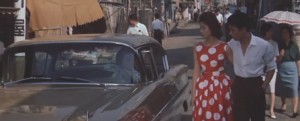


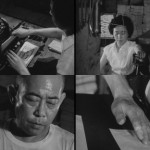
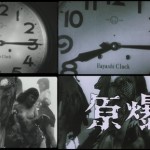
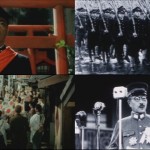

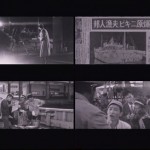

![Gengar vs. Nidorino, opening sequence of Pokémon, Season 1, Episode 1, 'Pokémon! I Choose You!’, (00:01:09), [online], available at: http://vimeo.com/23409651](http://www.reflexivehorizons.com/wp-content/uploads/2014/03/pokemonandafandomofnostalgiafig1-150x150.jpg)
![Gengar vs. Nidorino, opening sequence of Pokémon Red/Blue, (00:00:11), [online], available at: http://www.youtube.com/watch?v=C19O5xm51dk](http://www.reflexivehorizons.com/wp-content/uploads/2014/03/pokemonandafandomofnostalgiafig2-150x150.jpg)